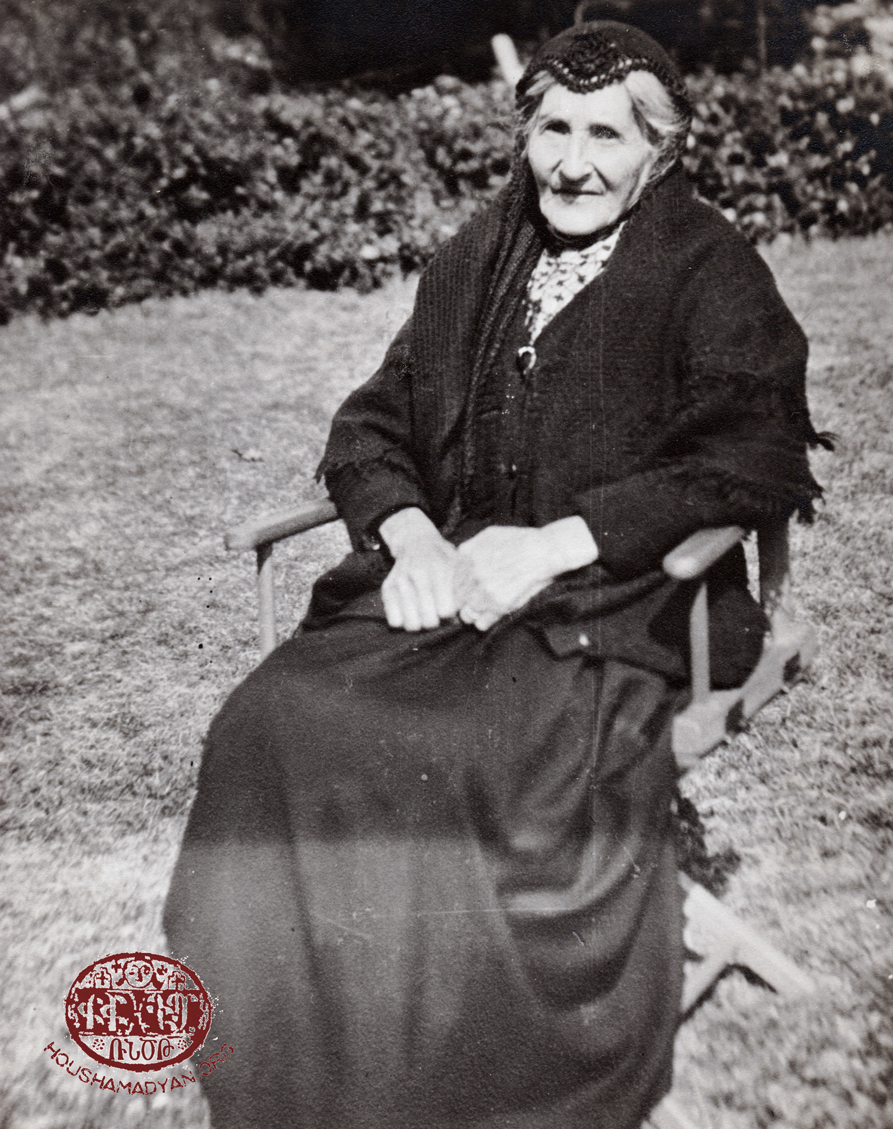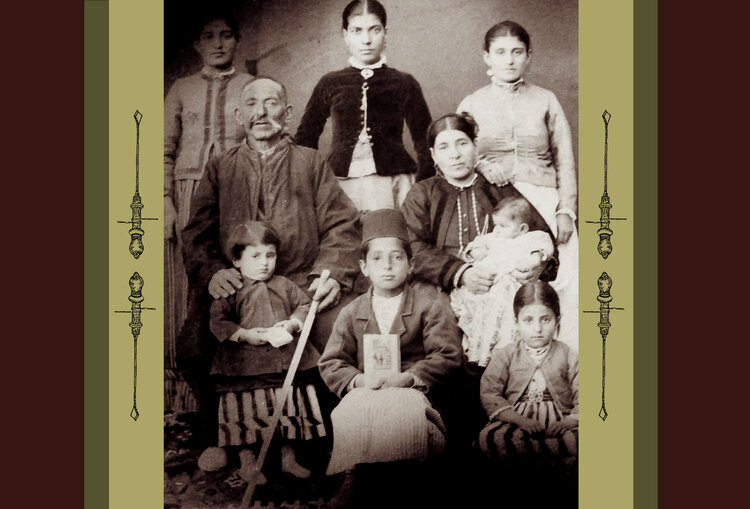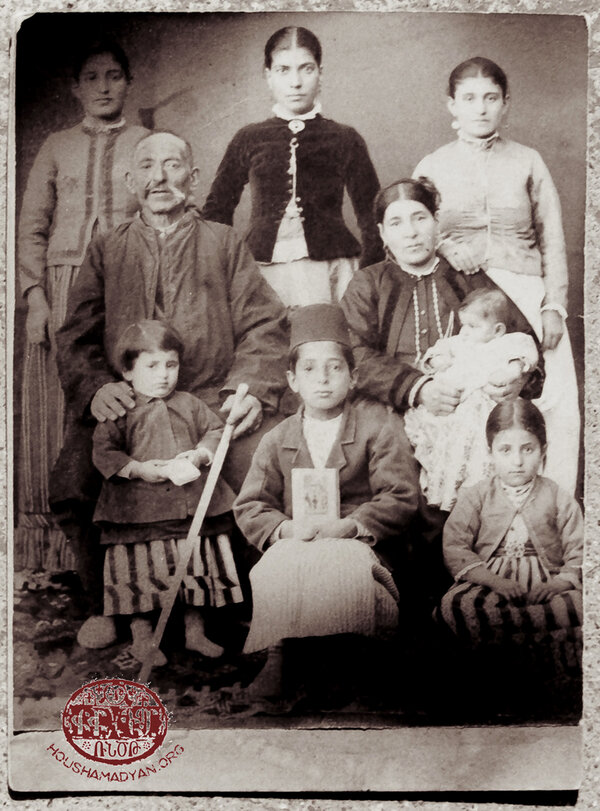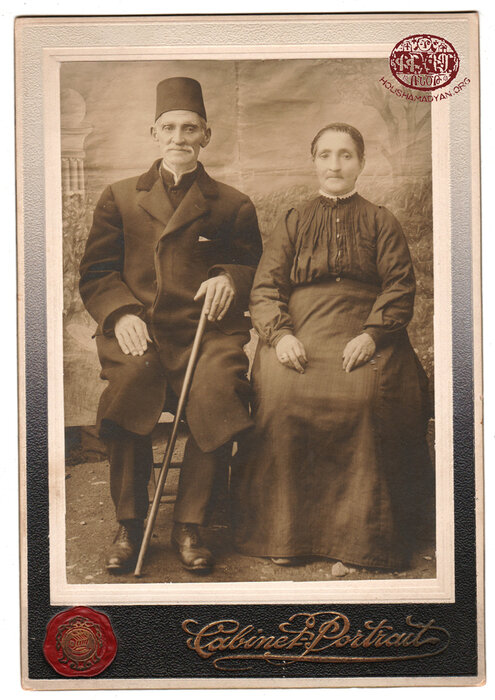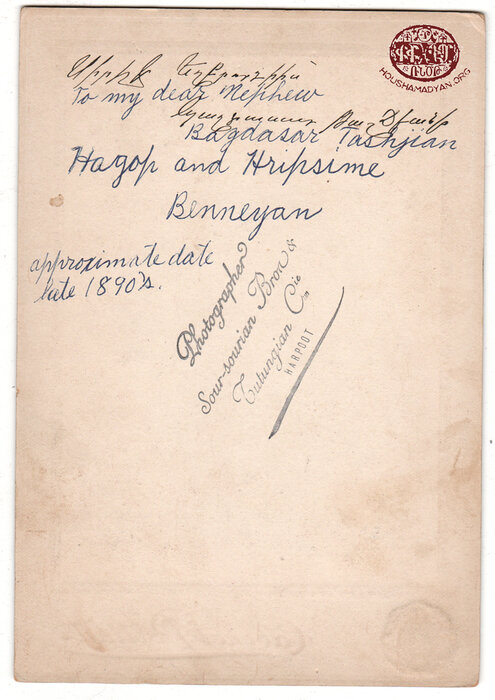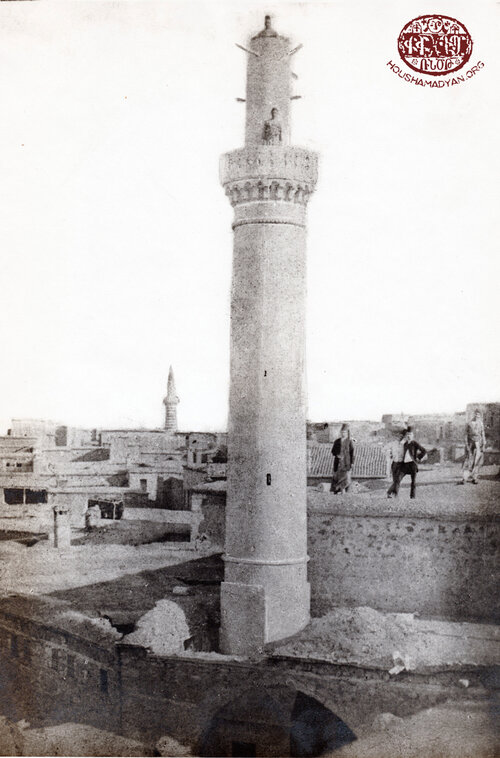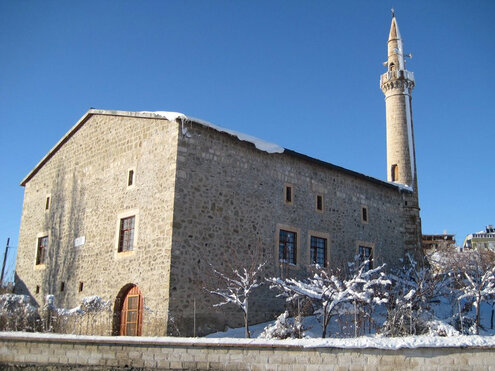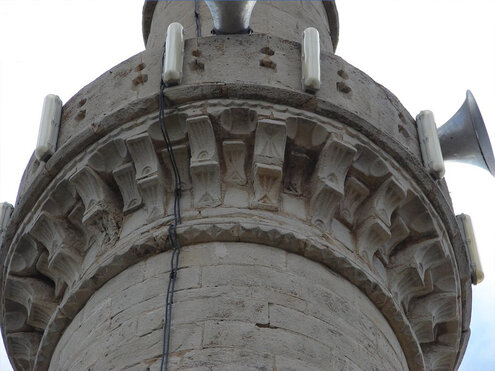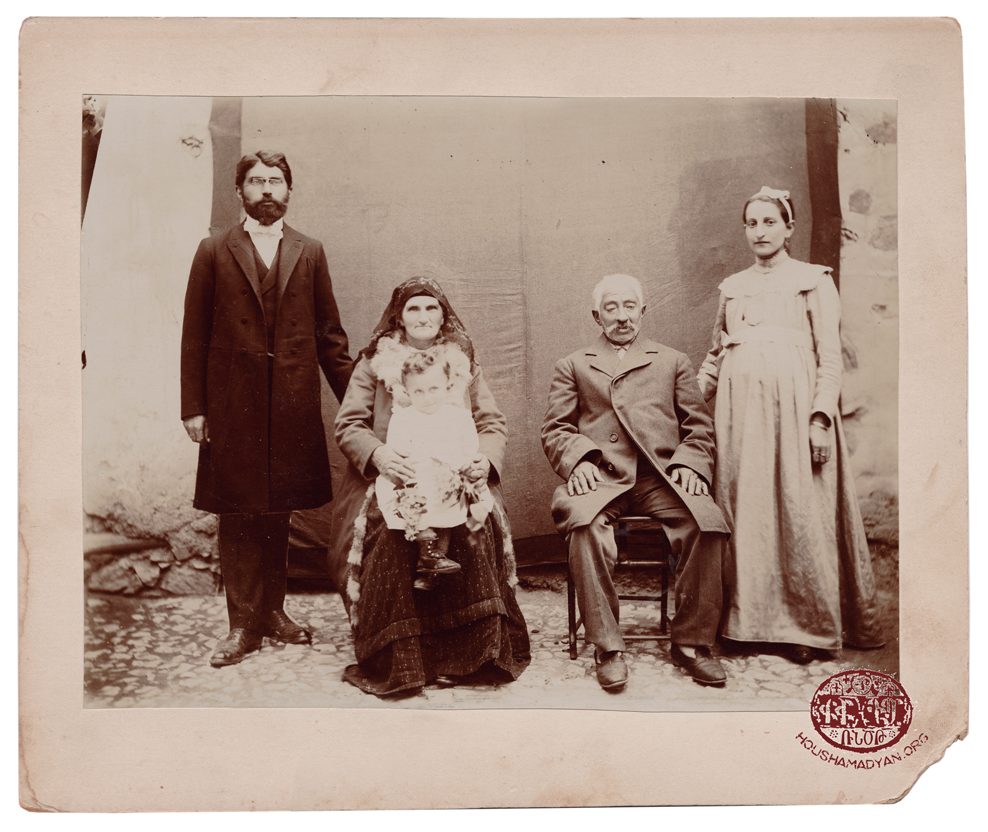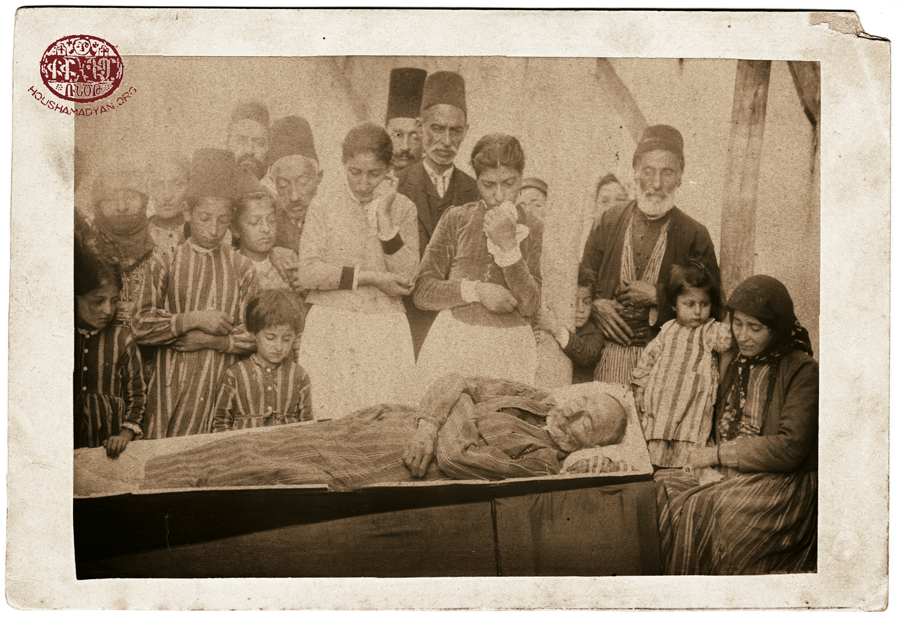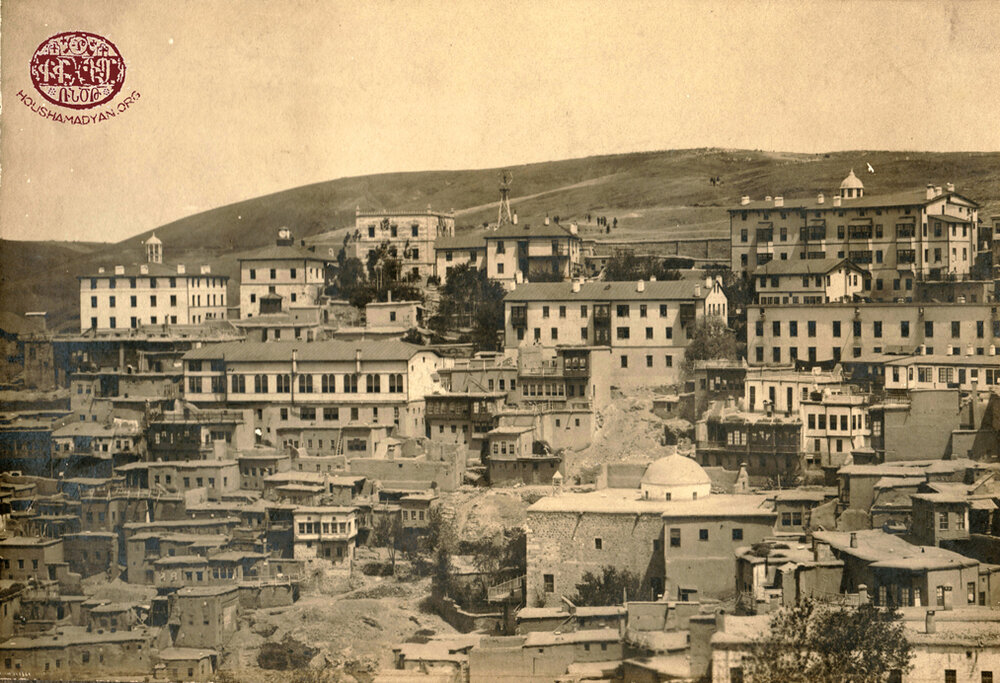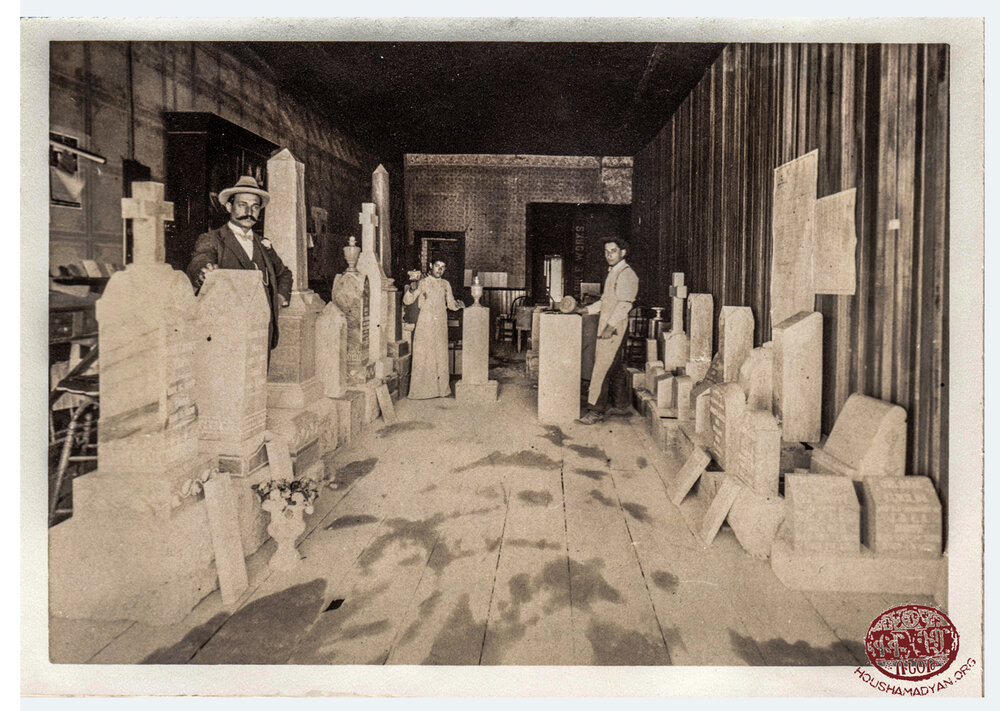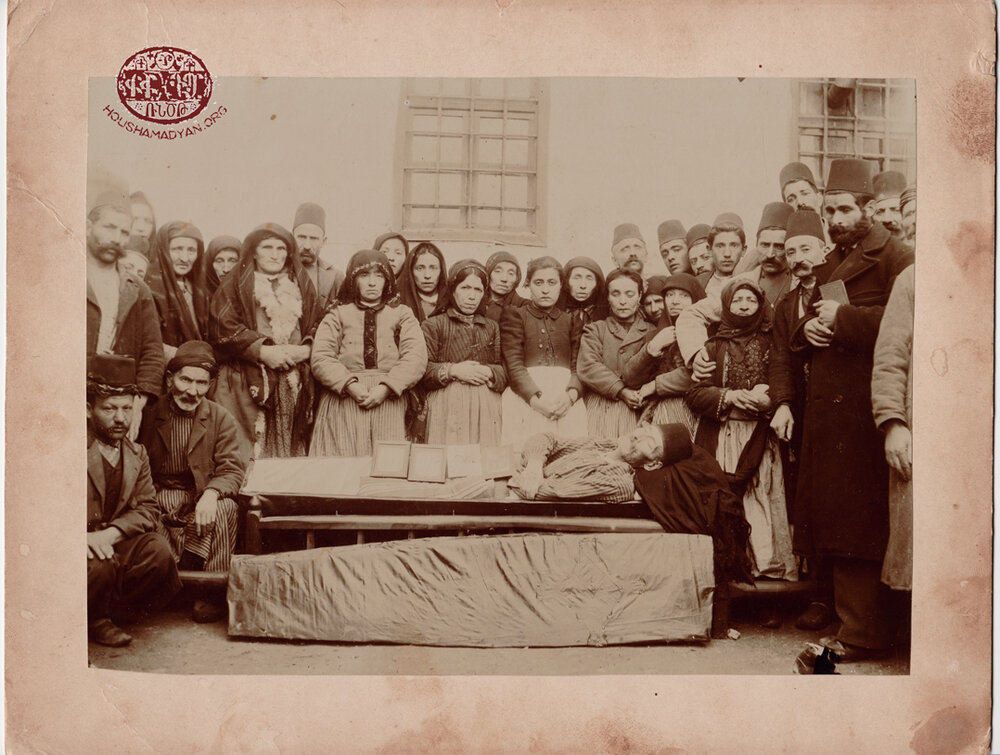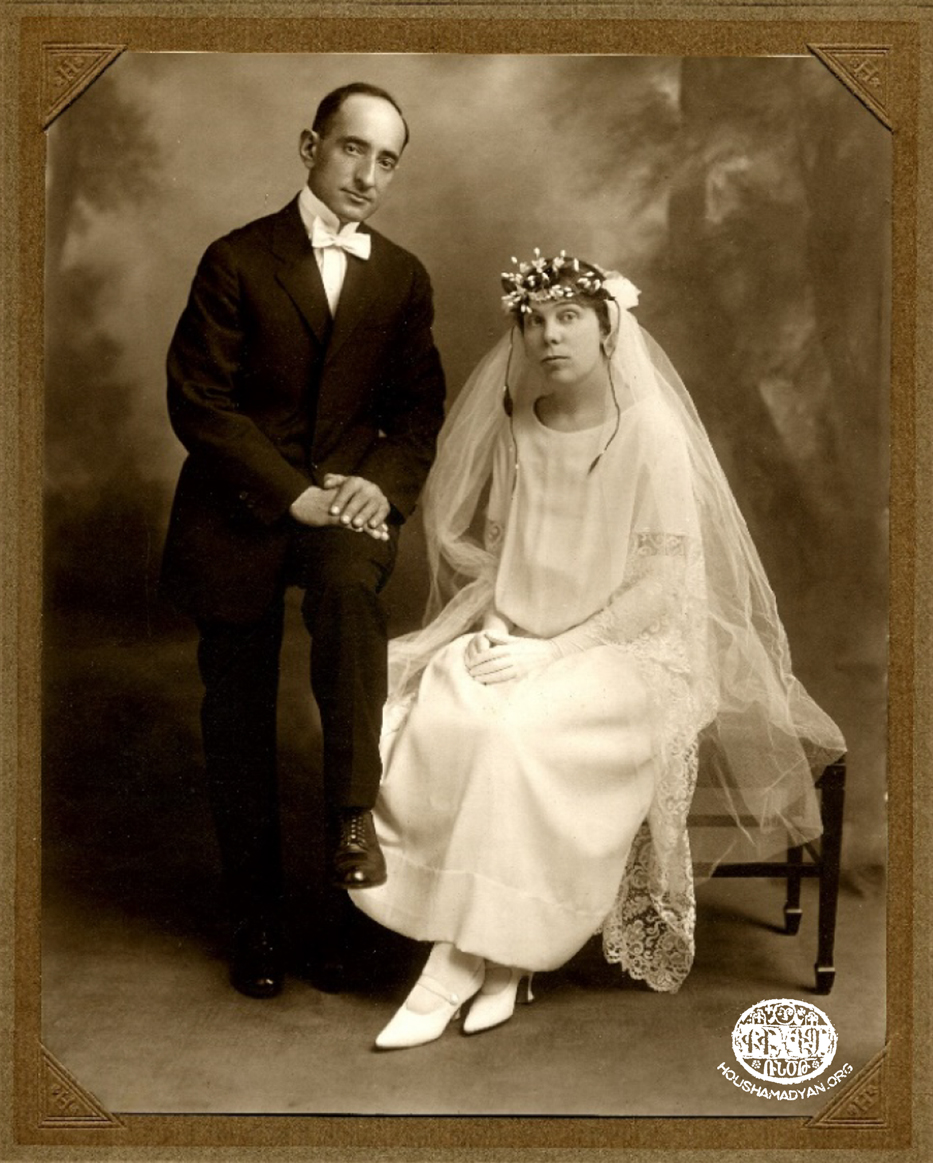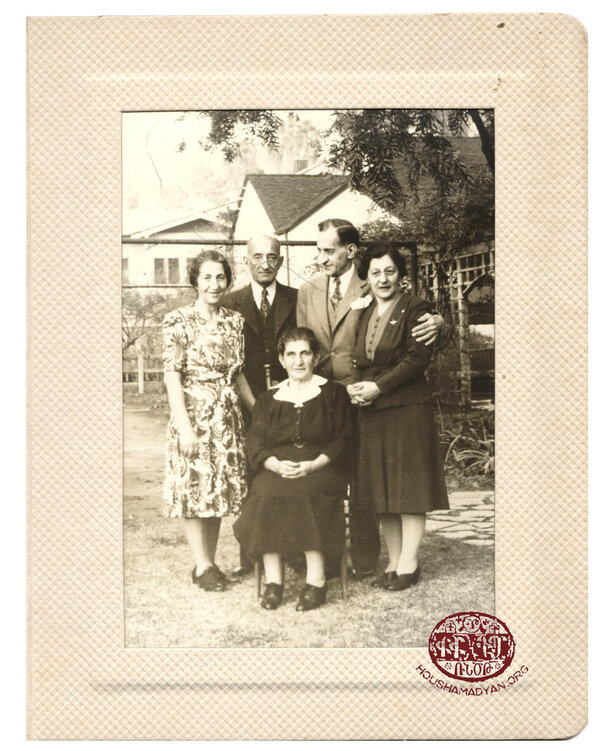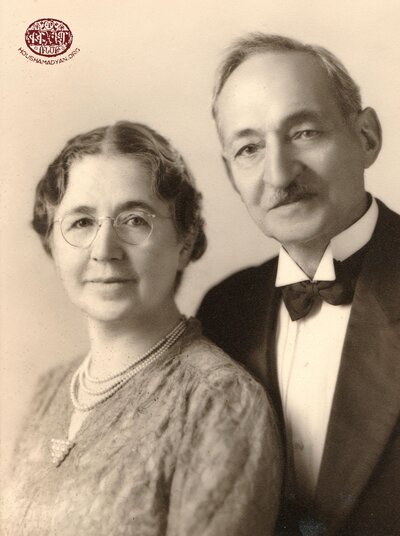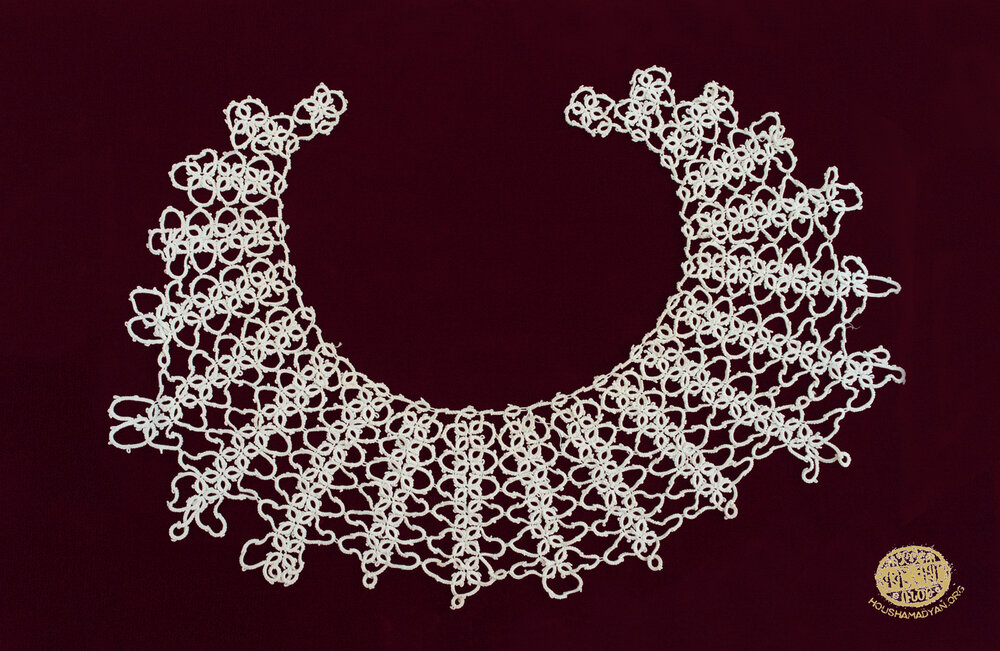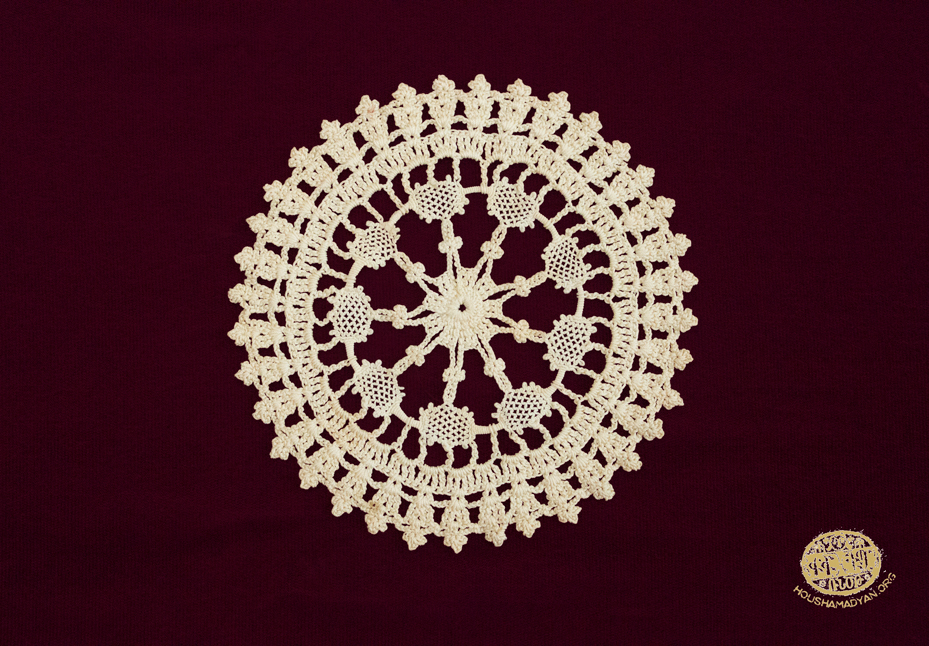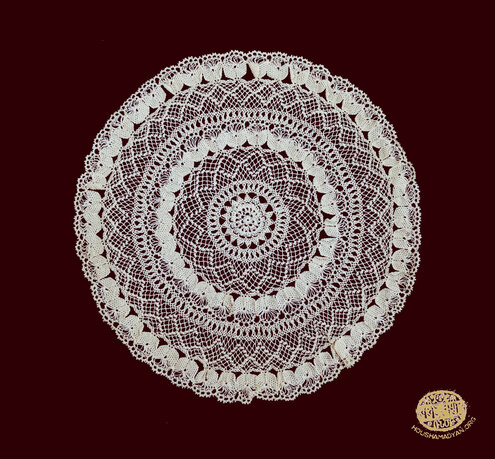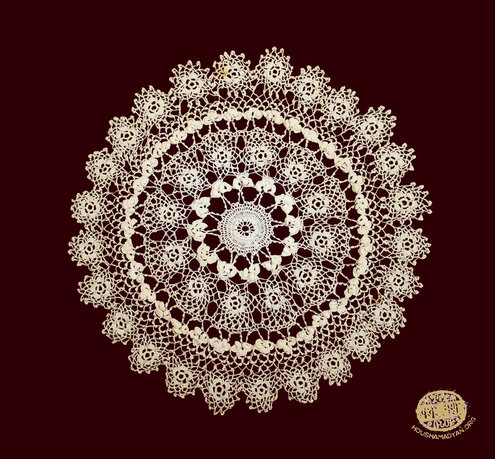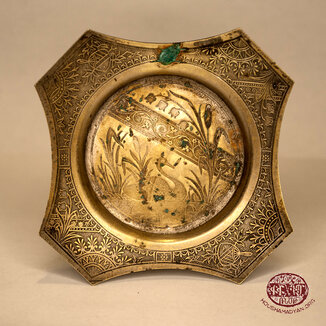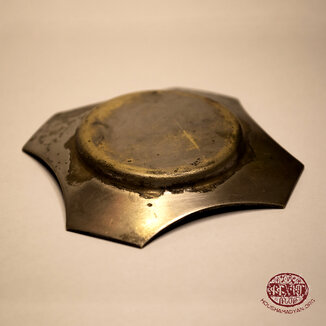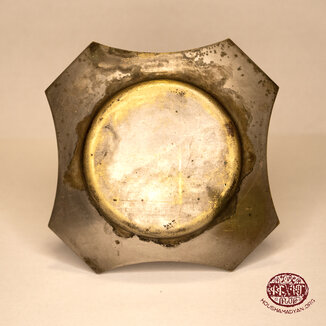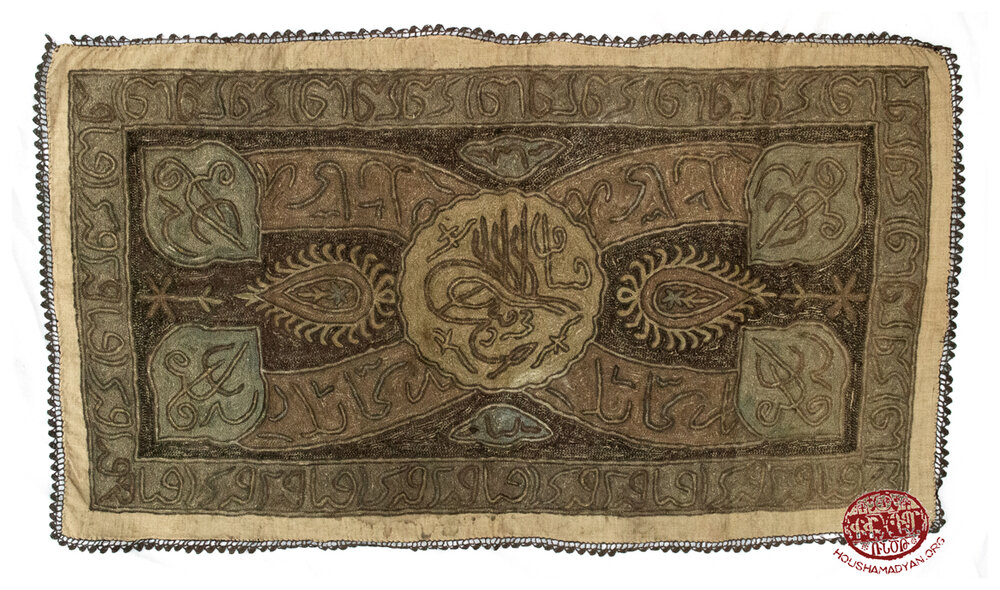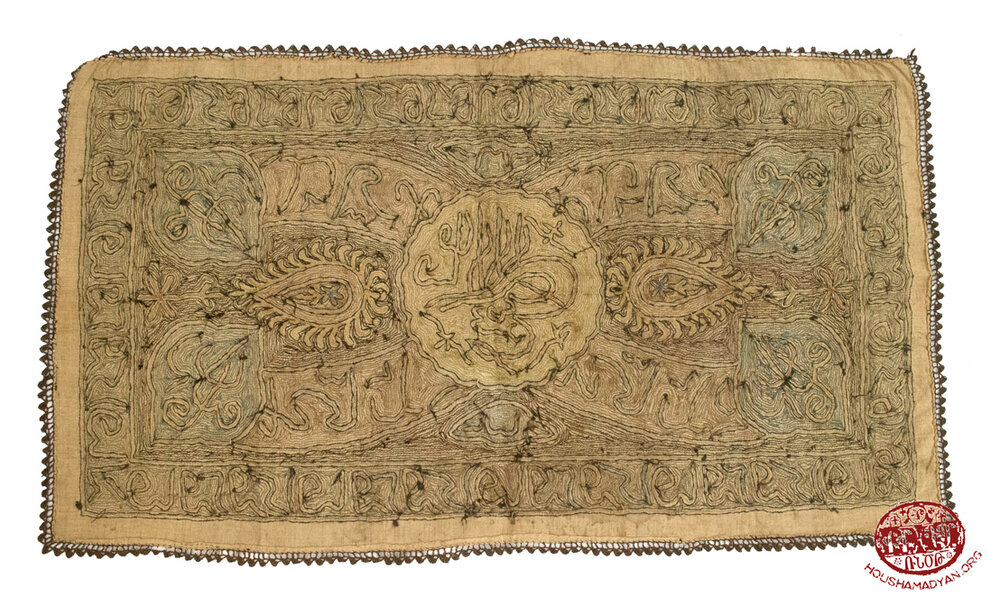Tashjian/Benneyan collection - Pasadena, CA
Author: Vahé Tachjian, 30/01/21 (Last modified 30/01/21) - Translator: Simon Beugekian

This page is dedicated to the collection of the Tashjian/Stone and Benneyan families, which have their roots in Kharpert/Harput. The material presented here was provided to us by Nickie Hovhannessian (nee Tashjian/Stone).
Nickie also sent us a family tree that she prepared, and which includes detailed information on each of her ancestors. This family tree begins in the early 19th century, and the most senior member listed on it is Benna Melkon, who was born in Kharpert in 1808.

Benna Melkon was married to Anna, and the two had seven children: Kevork Tashjian (1823-1893), Garabed Benneyan (1826-1908), Yeghisapet Benneyan (died in 1884), Pilibbos Tashjian (died in 1881), Hagop Benneyan (killed during the Genocide), and Badaskhan Benneyan-Pashgian (died in 1901). Anna Benneyan died in 1883.
Among Melkon and Anna’s children, we are most interested in Kevork Tashjian’s branch, of which Nickie Hovhannessian is a descendant.
Kevork Tashjian was a well-known architect, stone cutter, and mason in Kharpert. He had a stonecutting workshop in the city and was locally known as Tashji Kevork. This is why his descendants bore the surname Tashjian rather than Benneyan. His brother Pilibbos also adopted the Tashjian surname. The words tashj and benna are virtual synonyms. Banna or benna is a word of Arab origin, also used in Ottoman Turkish, and which is usually translated as builder, but may also be translated as architect or mason. Tashj is the Turkish word for stone cutter, stone fitter, or mason. Kevork would cut boulders in the quarries in the outskirts of city, transport the stone to his workshop, and use it to build homes and make tombstones.
Kevork Tashjian married Mariam around 1857. They had two children, Mardiros Tashjian (1858-1877) and Khoomar Tashjian (1861-1939). Mariam died at a young age. After her death, Kevork married a second time to Altoon Alexanian (1850-1932). This was also Altoon’s second marriage. She had first married in 1866, but her husband had died only a year later. Altoon and Kevork had 10 children: Baghdasar Tashjian (1869-1939), Mariam Tashjian (1870-1874), Sultan Tashjian (1871-1875), Mariam/Mary Tashjian-Baghdasarian (1873-1971), Sultan-Arax Tashjian-Yeghoyan (1875-1917), Mardiros Tashjian (1879-1975), Aghavni Tashjian (1882-1887), Yeghisapet/Elizabeth Tashjian-Constantian (1884-1960), Philipp Benneyan (1887-1973), and Aghavni/Ivy Tashjian-Devirian (1890-1973).

Mardiros Tashjian/Stone, one of the couple’s 10 children, was the grandfather of Nickie Hovhannessian. He should not be confused with the son of the same name that Kevork had with his first wife, Mariam. The first Mardiros died at a young age and before the birth of the second. This Mardiros, Kevork and Altoon’s son, would become a Methodist preacher in the United States in 1899. In the English-speaking world, he was known as Reverend MK Stone. He married Tryphena Cody (1891-1979) in 1922, in Pasadena, California. They had two children, Don Philipp Stone (1924-1964) and Paul Stone (1926-2009). Nickie is Paul Stone’s daughter.
Kevork Tashjian and his family lived in the Upper neighborhood of Kharpert, in the environs of Saint Hagop Church and Euphrates College. Mardiros, Kevork’s son, studied at the Euphrates College from early kindergarten through graduation.
Most of the information provided on this page is based on Reverend MK Stone’s memoirs, which he wrote in English.

The Construction of the Agha Djami Mosque (Ağa Camii) and Its Photograph
One of Mardiros’s brothers, Baghdasar Tashjian, worked with his father in the latter’s workshop. He, too, was a master stone cutter and mason. Other members of the family also worked for Kevork Tashjian, including Tavit/David Tashjian and Kasbar/Casper Tashjian, who were Kevork’s brother Pilibbos/Philipp’s sons.
Mardiros’s memoirs mention a remarkable construction project involving the family business. One year, Kevork Tashjian was commissioned with the construction of a mosque in the city of Kharpert. Kevork entrusted the construction of the minaret to his son, Baghdasar. The project probably started in 1889, right around the time Baghdasar and a few of his cousins were preparing to leave for the United States. Baghdasar was clearly exceedingly proud of his architectural achievement and posed for a photograph with the minaret as soon as construction was completed.

This photograph of the minaret is unique in that it features the builder and his workers. Baghdasar himself is pictured standing right where the muazzin would stand. Below him, probably on the roof of the mosque, are four boys. According to Mardiros’s memoirs, in the opinion of Yeghisapet/Elizabeth Tashjian-Gostantian, the two boys with their arms around each other’s shoulders are probably Hovhannes/Jon Pashgian and Garabed Benneyan (later the Very Reverend). They were Baghdasar’s cousins. Mardiros adds that there is a slight chance that the boy on the left, wearing the fez, is he, at the age of 10. Mardiros did not remember posing for the photograph, but he wrote that he had memories of going up and down the spiral stairs that wound around the minaret during its construction; as well as having spent many hours at the site.
Baghdasar brought this photograph with him to the United States. When he first applied for a job in America, he showed the photograph to his potential employer as evidence of his skills. According to the family lore, he was offered employment on the spot.
During the preparation of this page, we showed this photograph to historian Mustafa Balabani, an expert in Kharpert/Harput history. He immediately recognized it as the Ağa Camii, or the Agha Mosque, which still stands today. In the background of the photograph, on the left, is another mosque, the Aladjali Mosque (Alacalı Camii).
Two contemporary pictures of the Agha Djami Mosque (Ağa Camii)
(Sources: https://mapio.net/wiki/Q8195601-fr/ and https://www.tripadvisor.com/Attraction_Review-g672950-d15191977-Reviews-Aga_Cami-Elazig_Elazig_Province.html).
It must be noted that the construction of this mosque approximately coincided with a period marked with significant economic and cultural progress for Kharpert’s Armenians. A new Armenian economic upper class had formed in the city and in nearby Mezire (or Mamuret-ul-Aziz), well-represented in the trades, trading houses, and industry. These Armenians had flocked to the Upper neighborhood of Kharpert. Previously, the city’s Turkish beys and aghas had lived there, but their power and wealth had receded, and they had yielded the neighborhood to the new Armenian elite, a group that included the Tashjian family. The Tashjians lived in a three-story home, and Mardiros Tashjian was a student at the Euphrates College. He had not received a scholarship and relied on his father to pay the tuition fees. In short, this Armenian elite enjoyed a sense of confidence that their position and influence were on the rise.
Perhaps another manifestation of this confidence is another anecdote from the family lore pertaining to the construction of the mosque. It is said that Kevork Tashjian secretly placed a Bible and a Christian hymn book in the mosque’s foundations. Kevork only shared this secret with his wife, Altoon, who in her turn had shared it with her children after their migration to the United States.
During the reign of Sultan Abdul Hamid II, when the anti-Armenian massacres began in 1895, the Upper neighborhood, the symbol of the prosperity of the city’s Armenians and the downfall of its Turkish elite, was the first target of the mob that ransacked Kharpert. Kevork Tashjian’s three-story home was set ablaze like the homes of many fellow Armenians.
The Benneyan family, 1896. Left to right: Melkon/Melcon Benneyan (standing); Khachatoun Benneyan (nee Demirdjian, Melcon's mother, seated); Victoria Benneyan (later Boghosian, Melcon's daughter), sitting in Khachatoun’s lap; Garabed Benneyan (Melcon's father); and Haiganoush Benneyan (nee Yacoubian, Melcon's wife) who is pregnant with Albert Benneyan. Photographed by Soursourian.
The funeral photograph of Kevork Tashjian, 1893, Kharpert. It was customary for members of the family to pose for one last photograph with the deceased. Kevork’s wife, Altoon (1); children Aghavni/Ivy (2), Khoomar (3), Sultan-Arax (4), Philipp (5), Mardiros (6), and Yeghisapet/Elizabeth (7); Kevork’s brothers Hagop Benneyan (8) and Garabed Benneyan (9); Hagop’s sons Hrant Benneyan (10) and Khosrov Benneyan (11); Garabed’s son Khachadour (12); and Satenig Benneyan (nee Nahigian) (13). The photograph was sent to Kevork’s oldest son, Baghdasar, who had emigrated to the United States by that time. Photographed by Soursourian.

Migration to the United States
On 10 November 1895, mass violence broke out in Kharpert, targeting the city’s Armenians. The mob that attacked the city consisted of Kurds, who – as Mardiros Tashjian writes in his memoirs – were acting on the orders of the city’s Turkish authorities and notables.
Mardiros writes that the massacres of 1895 played a critical role in his decision to leave his native city. Other members of the family had already settled down in the United States. The first to leave Kharpert was Mardiros’s uncle Pilibbos/Philipp’s son, Tavit/David. In Kharpert, he had worked in Kevork Tashjian’s workshop, where he had become skilled at this craft. The exact date of his migration to the United States is unclear, but we know that it occurred before 1889. He had settled down in the state of Vermont and worked at the Vermont Marble Company. He was later joined there by his brother Kasbar and his cousin Baghdasar (Mardiros’s brother). The latter left Kharpert in 1889. After Vermont, the Tashjian cousins moved to San Bernardino, California. There, they founded their marble workshop, which enjoyed great success. A few years later, Baghdasar parted ways with his cousins and opened his own workshop in Bakersfield. Locally, the business was known as "Bakersfield Marble and Granite Works".
Mardiros described his journey from Kharpert to the United States in some detail. He first obtained his passport from the Ottoman authorities, which he received on condition that he never step foot on Ottoman soil again. He was accompanied on his travels by his cousin (father’s brother’s son) Khosrov. Mardiros was 17 years old, and Khosrov was 16.

They left Kharpert on November 30, 1896, with a large group of approximately 200 travelers, most of them orphaned girls being transported to Constantinople. At the time, the Armenian provinces of the Empire were facing a humanitarian disaster in the form of the thousands of orphans left behind by the victims of the 1895 massacres. The first leg of the journey took the group to Samson, the port-city on the coast of the Black Sea, which they reached on 19 December. On 26 December, they boarded the French steamer Pacquet, which took them first to Constantinople, where they stayed for a day and a half, then to Marseille, where they docked on 4 January 1897. Two days later, Mardiros and Khosrov boarded a train in Marseille and journeyed to the city of Le Havre in northern France. They parted ways there, with Khosrov continuing to London to visit his sister, and Mardiros boarding the ship to New York, which he reached on 17 January 1898. He first traveled to the city of Worcester (Massachusetts), where his cousin, Khachadour G. Benneyan, was an Evangelical minister. Three weeks later, he took a ship to Galveston, Texas, and from there he made the land journey to the city of Bakersfield, California, to join Baghdasar.
Mardiros became Baghdasar’s colleague and they worked together in the stonecutting workshop. In 1899, Mardiros left this job and became an Evangelical minister. In the following years, most of the members of Kevork Tashjian’s family left Kharpert and joined Mardiros and Baghdasar in the United States. By that time, Kevork himself had already died in Kharpert. Among those who migrated to America were Kevork’s wife, Altoon; Khoomar (his daughter from his first marriage); Mariam; Yeghisapet/Elizabeth; Philipp; and Aghavni/Ivy.
Among the members of the family who fell victim to the Armenian Genocide were Mardiros’s uncle, Hagop; Hagop’s wife, Hripsime (nee Shikloyan); their daughters Margaret, Anna, and Zarouhi; and Margaret’s husband, Ovan.
Mardiros’s cousin (father’s brother’s son) was the Very Reverend Khachadour G. Benneyan (1864-1944). He was a lecturer at the Euphrates College in Kharpert. Later, after migrating to the United States, he became well-known as the manager and editor of the weekly newspaper Hayasdani Gochnag [Clarion of Armenia]. The paper had a large circulation and was published in New York. Benneyan remained at its helm from 1907 until his death in 1944.

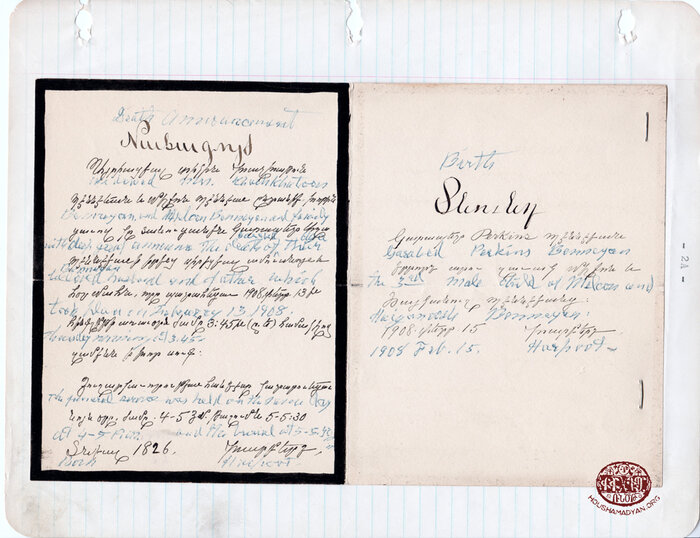

Needlework embroidered by Khoomar, Mariam, Yeghisapet/Elizabeth, and Aghavni/Ivy, Mardiros Tashjian’s (Rev. MK Stone) sisters, in the 1940s and 1950s in the United States.

